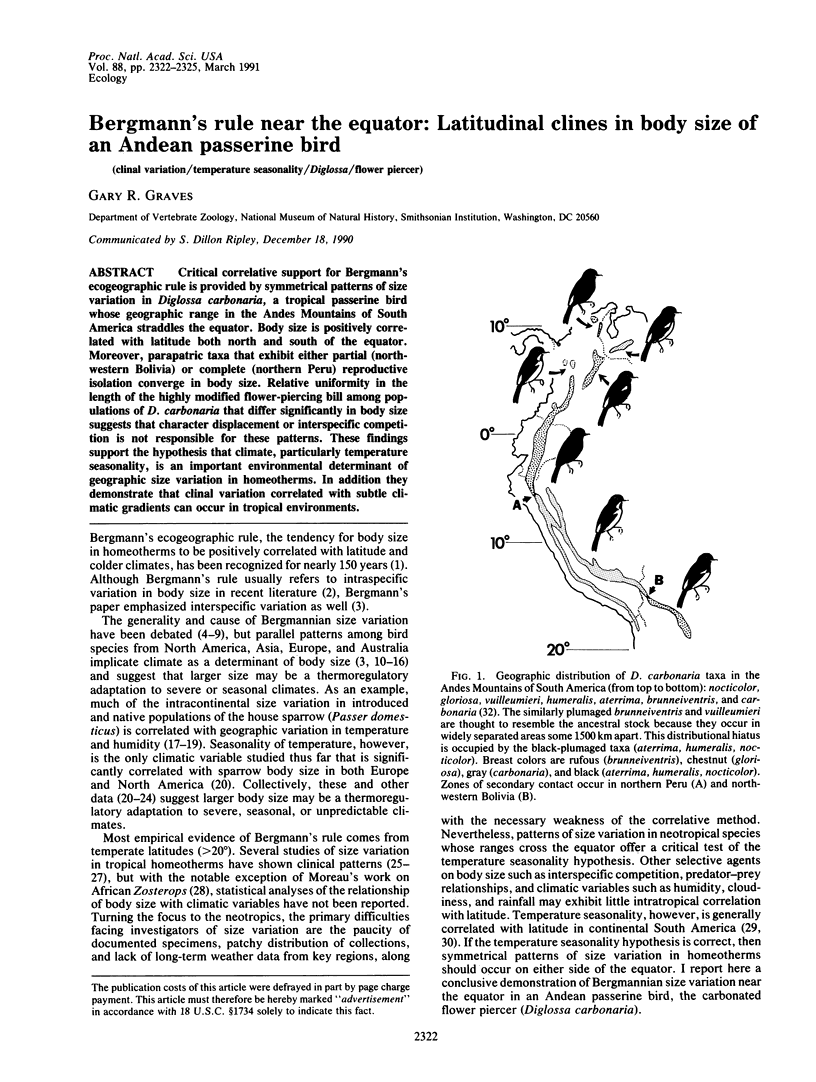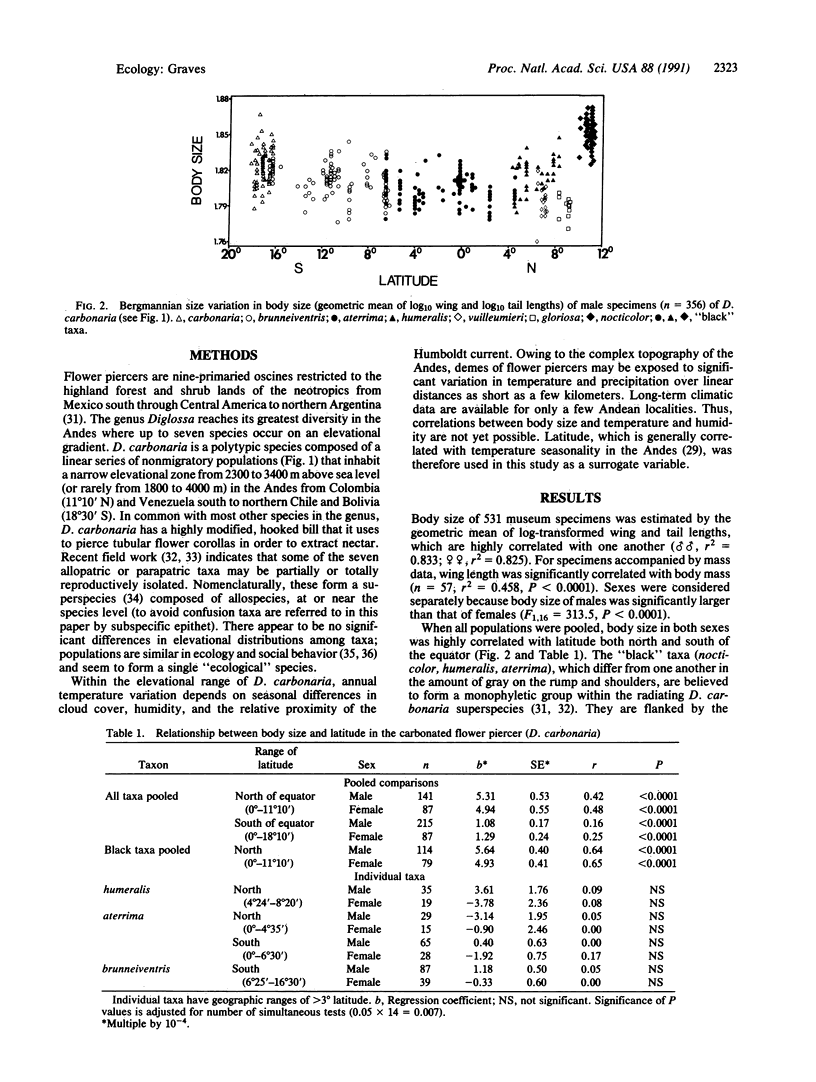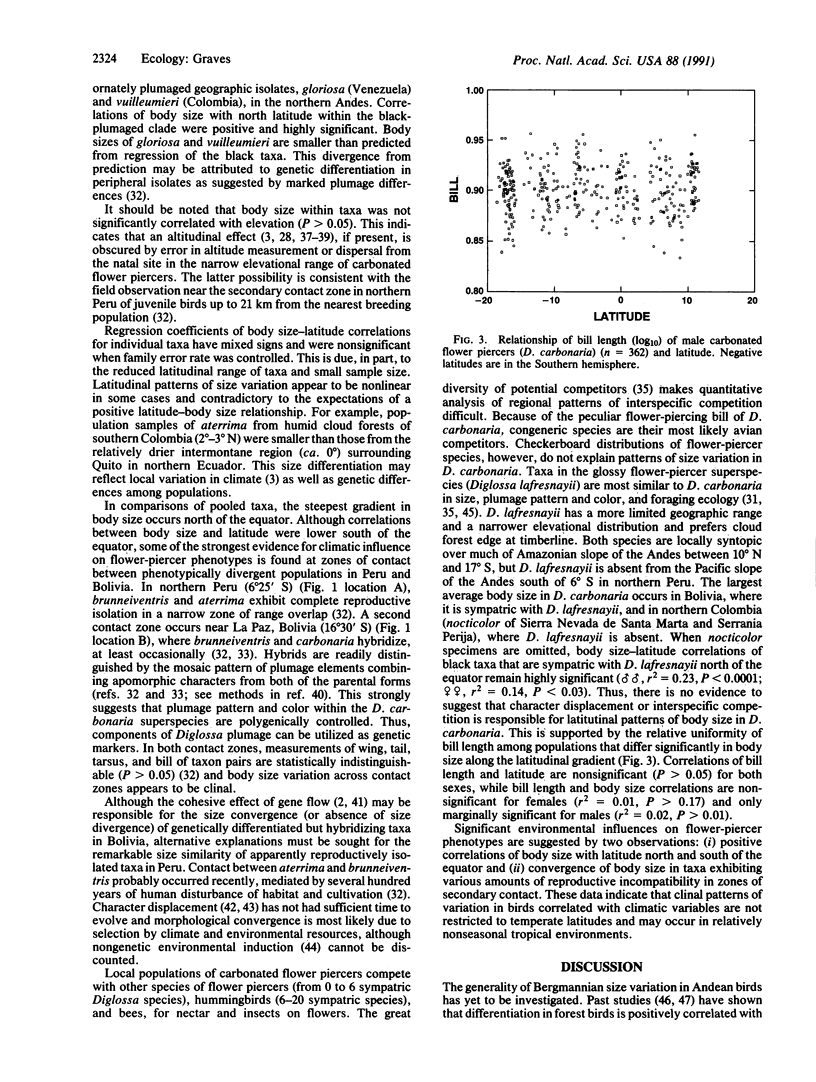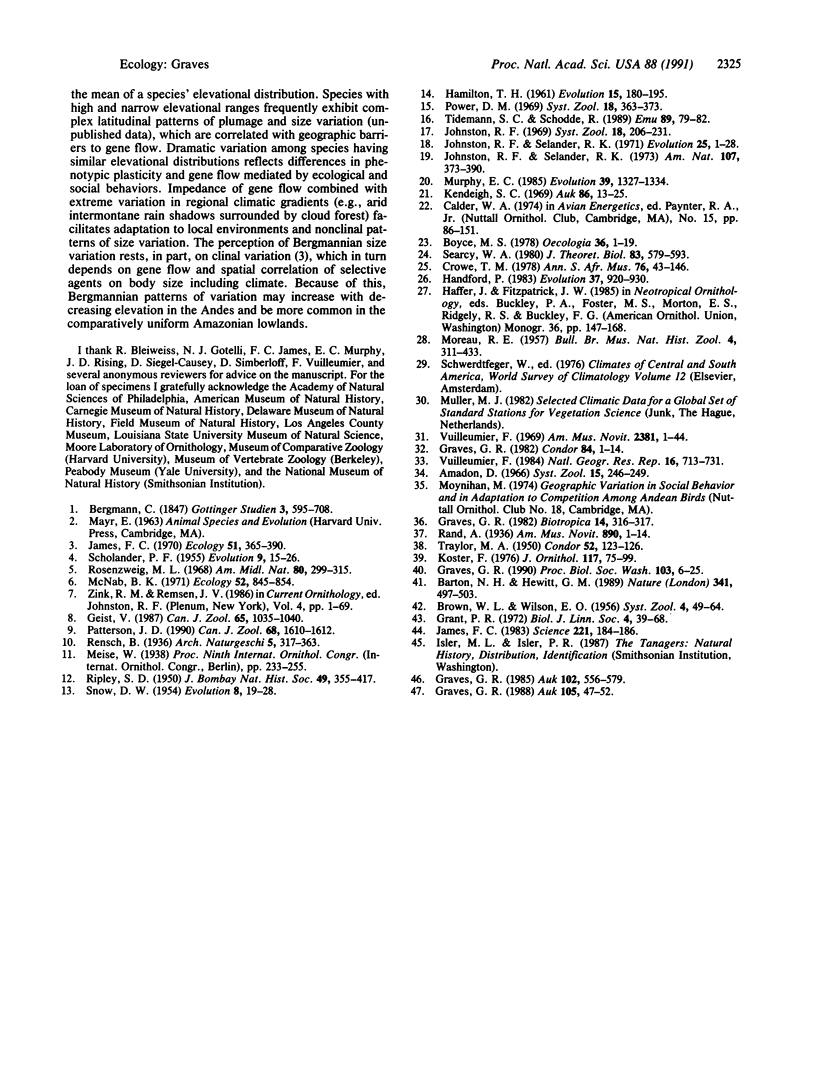Abstract
Critical correlative support for Bergmann's ecogeographic rule is provided by symmetrical patterns of size variation in Diglossa carbonaria, a tropical passerine bird whose geographic range in the Andes Mountains of South America straddles the equator. Body size is positively correlated with latitude both north and south of the equator. Moreover, parapatric taxa that exhibit either partial (north-western Bolivia) or complete (northern Peru) reproductive isolation converge in body size. Relative uniformity in the length of the highly modified flower-piercing bill among populations of D. carbonaria that differ significantly in body size suggests that character displacement or interspecific competition is not responsible for these patterns. These findings support the hypothesis that climate, particularly temperature seasonality, is an important environmental determinant of geographic size variation in homeotherms. In addition they demonstrate that clinal variation correlated with subtle climatic gradients can occur in tropical environments.
Full text
PDF



Selected References
These references are in PubMed. This may not be the complete list of references from this article.
- Barton N. H., Hewitt G. M. Adaptation, speciation and hybrid zones. Nature. 1989 Oct 12;341(6242):497–503. doi: 10.1038/341497a0. [DOI] [PubMed] [Google Scholar]
- James F. C. Environmental component of morphological differentiation in birds. Science. 1983 Jul 8;221(4606):184–186. doi: 10.1126/science.221.4606.184. [DOI] [PubMed] [Google Scholar]
- Searcy W. A. Optimum body sizes at different ambient temperatures: an energetics explanation of Bergmann's Rule. J Theor Biol. 1980 Apr 21;83(4):579–593. doi: 10.1016/0022-5193(80)90190-3. [DOI] [PubMed] [Google Scholar]


